Are you tired of hearing your safe beep every time you open or close it? The constant beeping can be annoying and even disruptive, especially if you have a loud or sensitive alarm. In this guide, we’ll discuss how to stop a safe from beeping and provide tips on preventing future beeps.
Dealing with a beeping safe can be annoying and concerning, especially if you are unsure how to resolve the issue. Understanding the common reasons behind the beeping and knowing how to address them can save you time and ensure the safe functions properly.
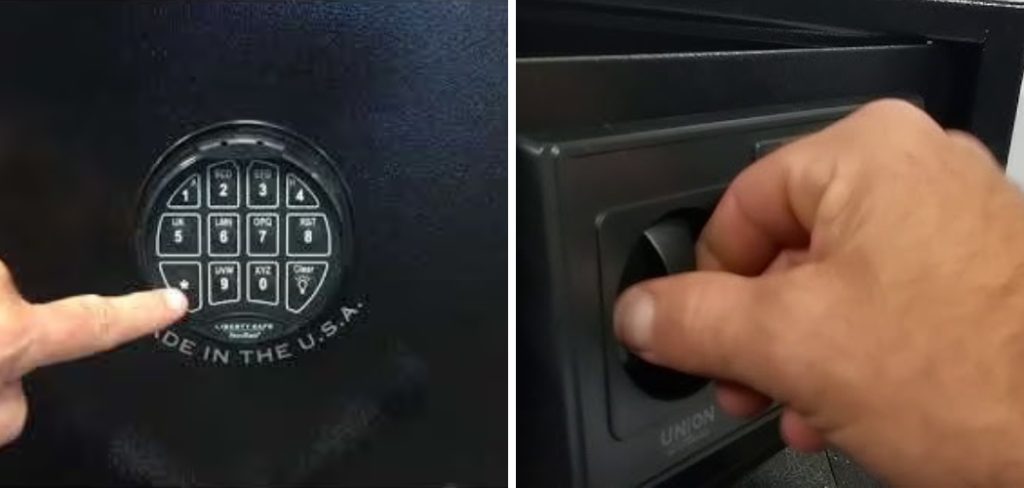
In this guide, we will explore the various steps and troubleshooting methods to stop a safe from beeping, providing you with practical solutions to restore peace and quiet in your home or workplace.
What Will You Need?
To resolve a beeping safe, you may need the following tools:
- Spare Batteries: If your safe is beeping due to low battery, having spare batteries on hand can quickly solve the issue.
- Safe Override Key: Some safes have an override key that allows you to open the safe without using a code. This can be useful if your safe is beeping due to an incorrect code input.
- Screwdriver or Wrench: In some cases, you may need to access the internal components of the safe, so having a screwdriver or wrench can come in handy.
Now, let’s get into the steps you can take to stop your safe from beeping.
10 Easy Steps on How to Stop a Safe From Beeping
Step 1: Identify the Cause
The first step in stopping your safe from beeping is identifying the cause. Is it a low battery, incorrect code input, or a potential faulty wiring issue? Refer to the “Why Do Safes Beep?” section to determine the likely cause based on the symptoms your safe is exhibiting.
Step 2: Replace the Batteries
If the safe is beeping due to a low battery, replacing the batteries is often the simplest solution. Open the battery compartment, remove the old batteries, and replace them with fresh ones. Ensure that the batteries are correctly aligned with the positive and negative terminals.
Step 3: Reset the Safe
After replacing the batteries, you may need to reset the safe to stop the beeping. To reset your safe, follow the manufacturer’s instructions, as the reset process can vary depending on the model of your safe. Typically, this involves pressing a reset button located inside the safe or using your safe’s override key. Hold the reset button for several seconds until you hear a confirmation beep or see an indicator light. Resetting the safe will typically reprogram the internal system and may resolve any internal errors causing the beeping.
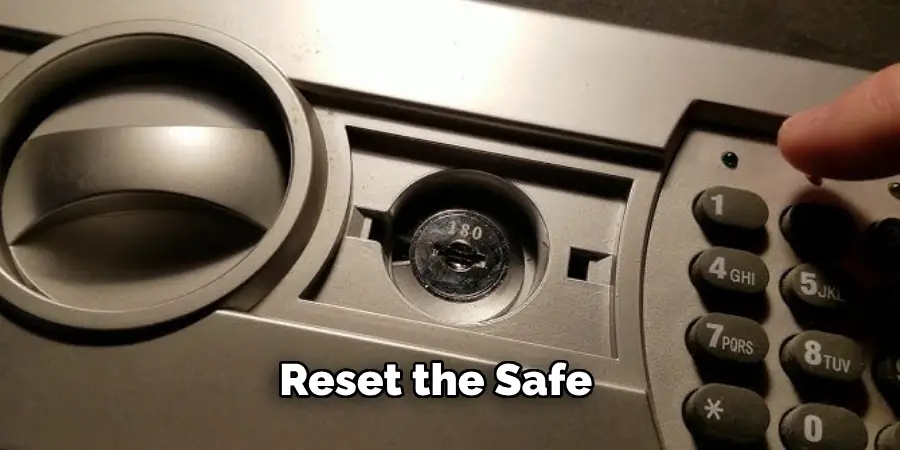
Step 4: Check for Incorrect Code Input Issues
If the beeping persists after replacing the batteries and resetting the safe, consider whether incorrect code input might be the issue. Enter the correct code slowly and carefully to avoid further lockout periods or alarms. If you’re unsure of the code or have entered the incorrect code too many times, using the override key can be useful for gaining access. Once inside, you can reprogram the correct code following the standard reprogramming procedure outlined in your safe’s manual.
Step 5: Inspect the Wiring
Faulty wiring might be the culprit for safes that continue to beep despite addressing battery and code entry issues. Begin by carefully inspecting the safe’s internal wiring. Use a screwdriver or wrench to open the panel and check for loose, frayed, or disconnected wires. Make sure to turn off any electronic components during this process to avoid shock. If you notice any suspect wiring, it might be wise to consult with a professional, safe technician to repair or replace the damaged parts properly.
Step 6: Secure the Safe’s Connections
While inspecting the wiring, ensure that all connections are secure and intact. A loose connection can cause intermittent beeping or full communication failure within the safe’s electronic system. Gently wiggle the wiring to ensure firm connectivity. If you find any loose connectors, securely fasten them back in place or replace them if necessary. This step can significantly reduce the possibility of future beeps caused by loosely connected components.
Step 7: Reprogram the Safe
After inspecting and securing the wiring, consider reprogramming your safe. Most electronic safes have a specific procedure for clearing previous settings and reprogramming a new code. Follow the detailed instructions provided in the user manual to ensure successful reprogramming. This step addresses lingering issues that might cause beeping and updates your security credentials, providing added peace of mind.
Step 8: Test the Safe
After taking the above-mentioned measures, close the safe door and test its operation several times. Make sure the safe locks and unlocks smoothly and without additional beeps. Re-check the functionality of new batteries and ensure the correct code is recognized consistently. This step is crucial to verify that all previous issues have been resolved effectively.
Step 9: Maintain Regular Check-ups
Preventive maintenance can save you headaches down the road. Regularly check the batteries, especially if your safe is used frequently, and replace them as needed. Periodically inspect the wiring and electronic components for signs of wear and tear. Keeping your safe well-maintained can reduce the likelihood of future beeping issues and prolong its operational lifespan.
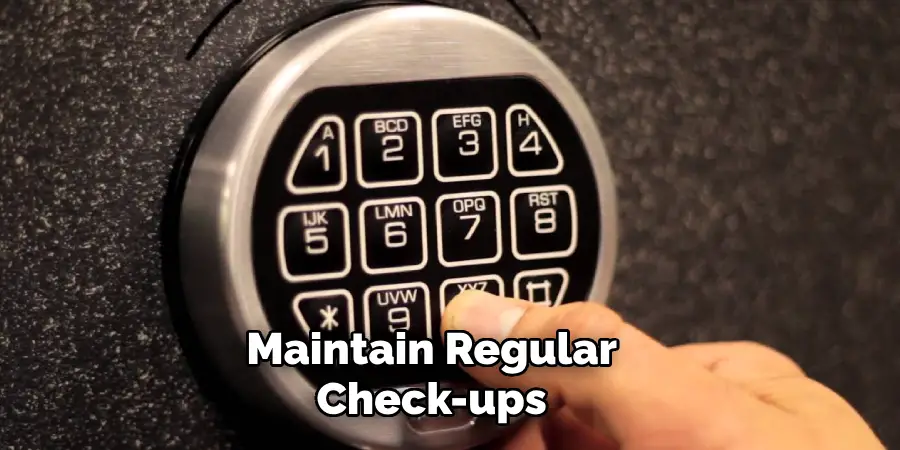
Step 10: Consult a Professional
If your safe continues to beep after all these steps or if any step seems too complicated, don’t hesitate to seek the help of a professional. A certified safe technician can diagnose and repair complex issues that may not be immediately apparent. Consulting a professional ensures your safety remains in good working order and maintains its integral security features.
By following these steps, you should be able to stop your safe from beeping and maintain its functionality. Proper care and regular maintenance can prevent future issues, ensuring your valuables remain secure without the annoying interruptions of beeping sounds.
5 Additional Tips and Tricks
Tip 1: Use High-Quality Batteries
Opt for high-quality, reputable brand batteries when replacing the batteries in your safe. Cheap or counterfeit batteries might not provide consistent power, leading to unwarranted beeping. High-quality batteries ensure more stable performance and longer lifespan, reducing the frequency of replacement.
Tip 2: Keep the Safe Clean
Regularly clean your safe to avoid dust and debris accumulation, which can interfere with electronic components. Use a soft, dry cloth to wipe down the safe’s interior and exterior. This simple maintenance step helps ensure that sensors and buttons function properly, reducing the chance of false alarms or beeping sounds.
Tip 3: Avoid Extreme Temperatures
Position your safe in an environment without exposure to extreme temperatures or humidity. Excessive heat or cold can affect the internal electronics and battery life, leading to malfunctioning and beeping. Find a location in your home with a stable, moderate temperature for optimal safe performance.
Tip 4: Regularly Update Codes
Periodically change and update the access code to your safe. Storing the steps for reprogramming your safe in an easily accessible place, such as a secure file or manual folder, can simplify this task. Keeping the code current and ensuring it is correctly inputted can help avoid potential beeping from incorrect code entries.
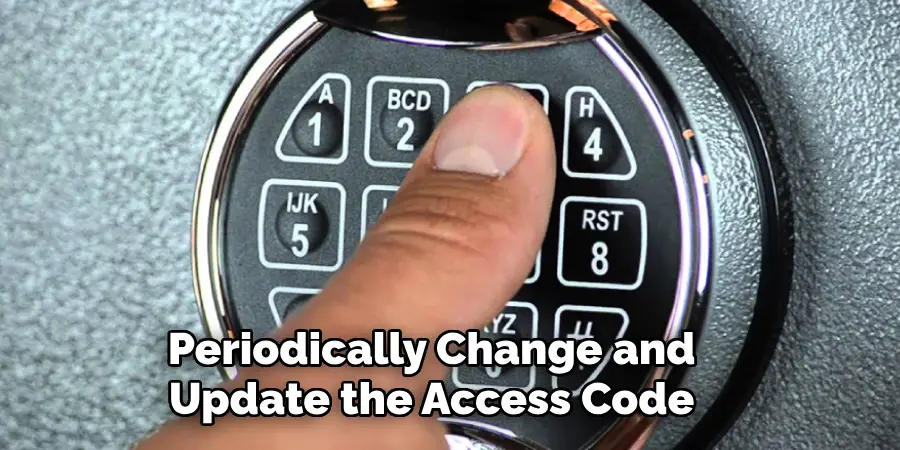
Tip 5: Monitor Battery Indicators
Many electronic safes have a battery indicator to show the power level. Pay attention to any warning signals indicating low battery. Replacing the batteries promptly when the indicator shows a low charge can prevent interruption and avoid unexpected beeping.
By implementing these additional tips and tricks, you can enhance the performance and reliability of your safe, ensuring it operates seamlessly and remains free from unnecessary beeping sounds.
5 Things You Should Avoid
1. Using Cheap Batteries: Avoid using low-quality or inexpensive batteries in your safe. These batteries might not deliver consistent power and can deplete quickly, leading to frequent beeping.
2. Ignoring Warning Signs: Never ignore warning signs like low battery indicators or malfunctioning components. Pay attention to any changes in the safe’s performance and address them promptly to avoid further issues.
3. Improperly Securing Connections: Avoid loosely connecting wires or ignoring damaged parts. These can cause intermittent beeping and compromise the safe’s security features.
4. Exposing the Safe to Extreme Temperatures: Do not place your safe in areas where it is exposed to extreme temperatures or humidity. This can affect its electronics and lead to unwanted beeping.
5. Neglecting Maintenance: Regular maintenance can help prevent future beeping issues. Neglecting to clean, inspect, and replace components as needed can lead to more significant problems down the road, resulting in costly repairs or replacements. Avoid neglecting your safe’s maintenance to keep it operating smoothly and reliably.
By avoiding these common mistakes, you can effectively stop your safe from beeping and maintain its optimal performance for years to come.
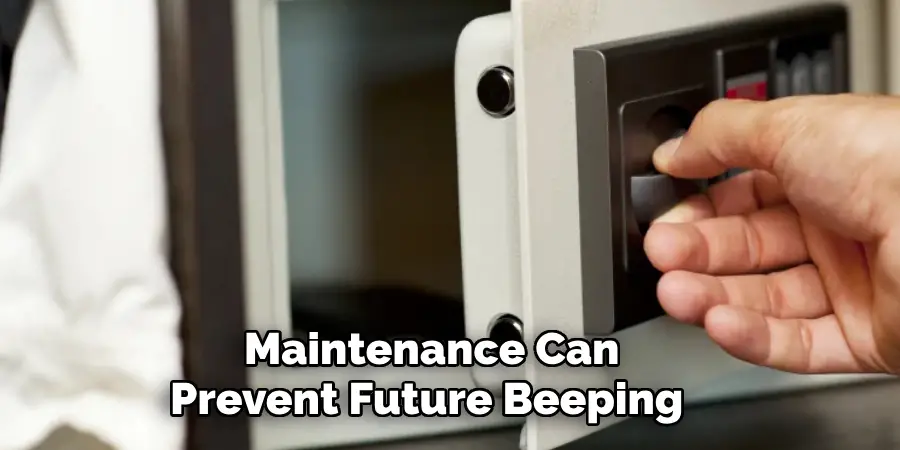
Conclusion
In conclusion, how to stop a safe from beeping involves a systematic approach to diagnosing and resolving common issues. Start by checking and replacing the batteries, ensuring that the replacement batteries are high quality.
Verify that the access code is correctly entered and reprogram the safe if necessary. Inspect the internal wiring and secure any loose connections to prevent communication failures. Regular maintenance, including cleaning the safe and monitoring the battery indicators, can help prevent future beeping. If these measures do not solve the problem, consult a professional safe technician.
By following these steps and incorporating the tips provided, you can ensure your safety functions efficiently and remain free from annoying beeping sounds, securing your valuables with peace of mind.
